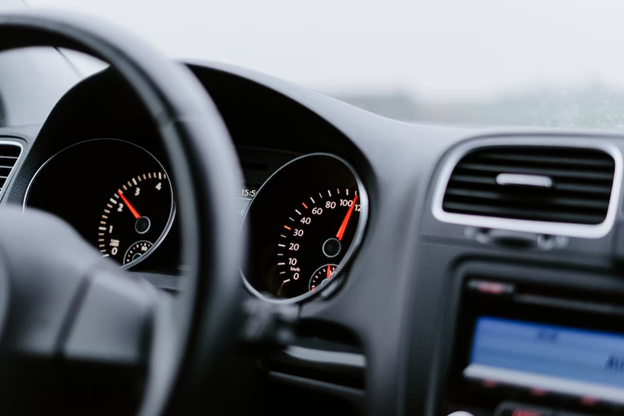5 Practical Ways to Save Fuel and Help the Environment
Environmental awareness and resource preservation have never been so crucial, making finding ways to reduce our carbon footprint and save resources more essential than ever. Transportation habits play a large part; fossil fuel-powered cars not only drain our budget but contribute to air pollution and climate change. Luckily, there are effective measures we can take to cut back fuel consumption while simultaneously supporting environmental efforts.
This comprehensive guide offers six proven strategies that enable you to save fuel without compromising convenience or your lifestyle. From adjusting driving techniques and implementing innovative technologies, these methods not only are accessible but can contribute to creating a greener and more sustainable future.
Whether you are a daily commuter, road trip enthusiast, or someone seeking positive change, these fuel-saving techniques are versatile enough for various situations and can easily adapt to changing needs.
Consider Aerodynamics

Pexels
The aerodynamics of large vehicles like trucks has a significant impact on their fuel efficiency. The trucking industry spends nearly $105 billion on diesel fuel annually. Fuel consumption increases as air resistance increases. Pay attention to the placement and design of accessories such as fairings and mud flaps, as they can reduce air resistance.
It is a good idea to look into aerodynamic devices that deploy when the truck reaches certain speeds automatically, which can even further enhance fuel efficiency. For example, installing panels and flaps that reduce drag will improve truck fuel efficiency and keep the vehicle on the road for longer.
Trailer design is equally important. Rounded or aerodynamically shaped trailer fronts, side skirts, and rear fairings can effectively reduce drag and turbulence, contributing to better fuel economy. Low-rolling-resistance tires and well-maintained wheel covers also play a role in minimizing air resistance.
Make Sure Your Tire Pressure Is Correct
Ensuring proper tire pressure is a fundamental step toward optimizing vehicle performance, safety, and fuel efficiency. Underinflated tires not only compromise handling and traction but also increase rolling resistance, leading to decreased fuel economy. Conversely, overinflated tires can result in a bumpier ride and reduced contact area, affecting road grip.
Regularly checking and maintaining the recommended tire pressure, as specified by the vehicle manufacturer, not only extends tire lifespan but also promotes even wear, enhances braking capabilities, and contributes to a smoother, more economical ride. By making tire pressure a routine part of vehicle maintenance, you’re not only safeguarding your driving experience but also making a positive impact on your fuel consumption and environmental footprint.
Reduce the Use of Air Conditioning
Pexels
Cutting down on the frequent use of air conditioning in your vehicle can offer a dual benefit, both for your finances and the environment. While air conditioning provides comfort during hot weather, it also places added strain on your vehicle’s engine and decreases fuel efficiency. Engaging the A/C system increases the engine’s workload, leading to higher fuel consumption.
By opting for natural ventilation or slightly opening windows when the weather allows, you can reduce this extra load on your engine and ultimately save on fuel costs. Moreover, minimizing A/C usage translates to fewer greenhouse gas emissions, contributing to a greener and more sustainable transportation choice. Embracing this simple yet impactful habit not only helps preserve your vehicle’s health but also aligns with eco-conscious practices, demonstrating your commitment to a more energy-efficient and environmentally friendly way of driving.
Reduce Weight
Trimming unnecessary weight from your vehicle is a smart strategy for enhancing fuel efficiency and overall performance. Carrying extra weight puts undue strain on your engine, forcing it to work harder and consume more fuel than necessary. By decluttering your vehicle’s interior and disposing of items not essential for travel, you can lighten its load and reduce fuel consumption.
Additionally, consider roof racks and cargo carriers—while convenient, they can increase aerodynamic drag, impacting fuel economy. Regularly cleaning out your trunk and backseat, and being mindful of what you transport, not only helps your vehicle run more efficiently but also contributes to a more sustainable approach to driving.
Turn It Off
When finding yourself in a queue at traffic lights, waiting to turn out of a junction, or idling while picking up a passenger, it’s important to recognize that your engine continues to consume fuel even as you remain stationary. This prolonged idling not only depletes fuel but also contributes to unnecessary emissions, all while you make no progress toward your destination.
To effortlessly conserve fuel and reduce your carbon footprint, consider a straightforward practice: switch off your engine if you anticipate waiting for more than ten seconds. Restarting your engine when movement is imminent is more fuel-efficient than idling, as modern engines are designed to restart efficiently. By adopting this simple habit, you contribute to both cost savings and environmental well-being, showcasing a responsible approach to fuel conservation in your daily driving routine.
In Closing
Incorporating these five practical strategies into your driving routine not only brings tangible benefits to your wallet but also reduces your environmental footprint. By mastering the art of fuel-efficient driving, optimizing aerodynamics, maintaining proper tire pressure, reducing air conditioning usage, and shedding unnecessary vehicle weight, you become an active participant in the movement toward a more sustainable future.

















